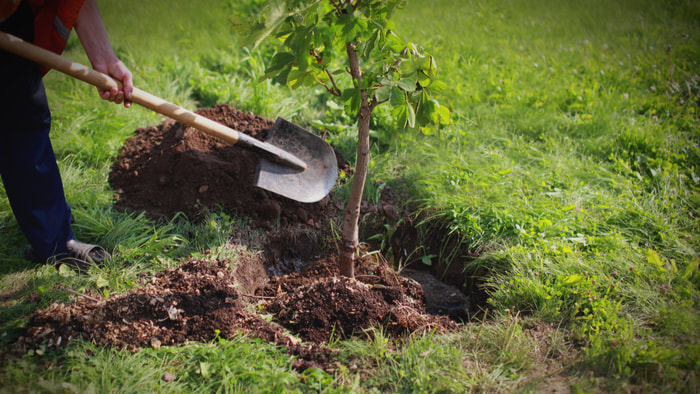Just Planting Trees Won't Save Us From Global Heating
By James Donahue
For years scientists have lamented the destruction of global rain forests because it was argued that trees play a major role in consuming carbon dioxide and they generate oxygen, thus maintaining a harmony for life to exist on Earth.
When world leaders hammered out an agreement at Kyoto, Japan, about a decade or more ago, to fight global warming by reducing industrial carbon emissions, a major portion of the package included a heavy emphasis on saving existing forests and planting more trees.
The argument was that forests provided "sinks" that consume large amounts of carbon dioxide. That belief caused Russia, Japan and Canada to demand concessions for their forest industries as part of the Kyoto protocol. The Clinton administration demanded tree planting as part of the agreement to save costs for the US economy, which was oil-dependent. Similar agreements were reached when world leaders met again at Paris in 2015.
Unfortunately President Donald Trump who came to power the following year, refuses to acknowledge the reality of global warming and has rejected efforts to reduce carbon fuel use or efforts to introduce green energy projects. But the world-wide effort to reverse the damage and slow down the onset of violent weather that is now sweeping the planet is going on. And the planting of trees remains an important part of the work.
Since Kyoto, however, as world leaders considered new and even tougher agreements to collectively battle the warming of the planet and the threat of drastic climate change. And scientists began to have doubts about the effectiveness of trees in stopping the heating or consuming enough carbon dioxide to make a difference.
A study by European scientists indicates that in addition to consuming carbon dioxide and emitting oxygen, older forests also are heavy sources of methane, yet another form of global heating gas.
In the study, published in the journal Nature, Frank Keppler of the Max Planck Institute in Germany found that living plants, dried leaves and grass emit large amounts of methane as they decompose.
Yet another study by Duke University, in North Carolina, suggests that a mass planting of new trees all over the globe will not be enough to mop up the carbon dioxide now floating around in the atmosphere.
William Schlesinger, a university spokesman, said the study "throws doubt on nations such as the US who have carbon sequestration as their only strategy for dealing with the problem."
The buildup of carbon dioxide has been mostly caused by automobile exhausts, industrial, and especially coal-burning electric generating plants. This, combined with the loss of large blocks of rain forest all around the world to make way for more people and more agricultural operation, has been a key factor in upsetting the delicate balance the planet has maintained in making Earth a habitable place for life.
The destruction of the forests has truly been a major factor in the equation. But trees are not the only solution to this complex puzzle.
By James Donahue
For years scientists have lamented the destruction of global rain forests because it was argued that trees play a major role in consuming carbon dioxide and they generate oxygen, thus maintaining a harmony for life to exist on Earth.
When world leaders hammered out an agreement at Kyoto, Japan, about a decade or more ago, to fight global warming by reducing industrial carbon emissions, a major portion of the package included a heavy emphasis on saving existing forests and planting more trees.
The argument was that forests provided "sinks" that consume large amounts of carbon dioxide. That belief caused Russia, Japan and Canada to demand concessions for their forest industries as part of the Kyoto protocol. The Clinton administration demanded tree planting as part of the agreement to save costs for the US economy, which was oil-dependent. Similar agreements were reached when world leaders met again at Paris in 2015.
Unfortunately President Donald Trump who came to power the following year, refuses to acknowledge the reality of global warming and has rejected efforts to reduce carbon fuel use or efforts to introduce green energy projects. But the world-wide effort to reverse the damage and slow down the onset of violent weather that is now sweeping the planet is going on. And the planting of trees remains an important part of the work.
Since Kyoto, however, as world leaders considered new and even tougher agreements to collectively battle the warming of the planet and the threat of drastic climate change. And scientists began to have doubts about the effectiveness of trees in stopping the heating or consuming enough carbon dioxide to make a difference.
A study by European scientists indicates that in addition to consuming carbon dioxide and emitting oxygen, older forests also are heavy sources of methane, yet another form of global heating gas.
In the study, published in the journal Nature, Frank Keppler of the Max Planck Institute in Germany found that living plants, dried leaves and grass emit large amounts of methane as they decompose.
Yet another study by Duke University, in North Carolina, suggests that a mass planting of new trees all over the globe will not be enough to mop up the carbon dioxide now floating around in the atmosphere.
William Schlesinger, a university spokesman, said the study "throws doubt on nations such as the US who have carbon sequestration as their only strategy for dealing with the problem."
The buildup of carbon dioxide has been mostly caused by automobile exhausts, industrial, and especially coal-burning electric generating plants. This, combined with the loss of large blocks of rain forest all around the world to make way for more people and more agricultural operation, has been a key factor in upsetting the delicate balance the planet has maintained in making Earth a habitable place for life.
The destruction of the forests has truly been a major factor in the equation. But trees are not the only solution to this complex puzzle.

